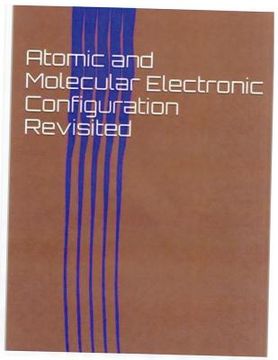Reseña del libro "Atomic and Molecular Electronic Configuration Revisited (en Inglés)"
In AMEC, chapter one, you will find a structure for O2 supported by both bond order and unpaired electron data. Previous attempts at providing an electronic structure for O2 fails due to bond order, number of unpaired electrons, or oxygen atoms indicating five orbitals although four is the limit. Herein, you will find the newly described 'LONE P ORBITAL Pi BOND' which is the solution not only for O2 but also for NO and OF (uncharacterized?). The 'LPOP' bond system is possible due to the small size and high electronegative character of the N, O and F atoms, which makes it related to H-Bonding. Diatomic structures involving row two periodic table elements (LiBe, Be2, BeB, B2, BC, C2, CN, N2, and F2) are also presented. All structures are shown being formed by two methods: MRAE (Most Recently Added Electron) and LCAO (Linear Combination of Atomic Orbitals). Chapter one also includes a (Section III) MRAE Mechanistic Sequence For: NO+ > NO > O2 > OF > F2 (and F2 > F- + F0), (Section IV) Photographs of NO and O2 molecular models, (Section V) MRAE-MO Energy Level diagrams for the diatomic structures listed above, and (Section VI) a MRAE-MO Energy-Level Diagrams Template, which is based on the cascade of changes in electronic distribution when an electron is forced onto a previous structure (MRAE), such as N2 going to N2 - and NO+ going to NO. Chapter 2 includes sections on hybridization and mechanism as it relates to polyatomic species. The following sequences are given: C + H > CH + H > CH2 + H > CH3 + H > CH4 (saturated and tetrahedral arrangement) and N + H > NH + H > NH2 + H > NH3 + H > NH4+ (also saturated and tetrahedral arrangement). The emphasis is to show trend from atomic structure through sp, sp2 and sp3 hybridization. Chapter 3 is composed of selections from Atomic and Molecular Configuration, 1987. Included is 'MRAE-AUFBAU' TEMPLATE' of the (periodic table) elements (expanded to two pages). It is informative to compare the MRAE concept for atoms to the MRAE method for diatomic species in Chapter one. In both cases, the key is the changes in electronic structure when an electron is added.

